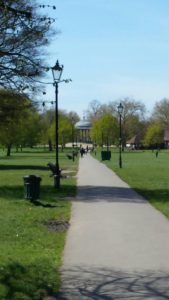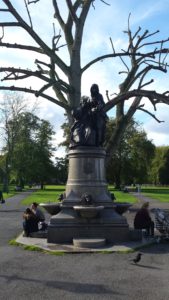 I recently wrote an article about, amongst other things, ‘pathetic fallacy’, the term which describes how weather represents emotion or momentous events, in literature ( see Storm Warning ). Similar, but from a different angle, is T.S. Eliot’s ‘objective correlative’.
I recently wrote an article about, amongst other things, ‘pathetic fallacy’, the term which describes how weather represents emotion or momentous events, in literature ( see Storm Warning ). Similar, but from a different angle, is T.S. Eliot’s ‘objective correlative’.
In his essay ‘Hamlet and his Problems‘ Eliot said ‘The only way of expressing emotion in the form of art is by finding an ‘objective correlative’; in other words, a set of objects, a situation, a chain of events which shall be the formula of that particular emotion; such that when the external facts, which must terminate in sensory experience, are given, the emotion is immediately evoked.’
So, in his view, Hamlet was not a successful play in one respect at least, in that there wasn’t a clear external situation which accounted for Hamlet’s actions. ‘ Insufficient external motivation,’ an actor friend said to me. Though, I’m not sure that’s quite right – it’s more writerly and manipulative than that, but it’s certainly how an actor might  approach it. Think of it first as an object, the lighthouse in ‘To the Lighthouse‘ or, as an acknowledged trigger, the madeleine in ‘Rememberance of Things Past’.
approach it. Think of it first as an object, the lighthouse in ‘To the Lighthouse‘ or, as an acknowledged trigger, the madeleine in ‘Rememberance of Things Past’.
Not something discussed in everyday conversation, perhaps, but the term, which I was familiar with from teaching years ago, cropped up three or four times in recent weeks. First as part of the discussion ‘Place and the Writer‘ at the Clapham Book Festival. Here, Clapham Common was the equivalent of an ‘objective correlative’ – not quite the same, we weren’t discussing a  novel or a play, but nonetheless the Common was symbolic of the spirit of the place, the genius loci. It was suggestedthat the spirit of the place was dissent, or non – conformism, the evidence being the presence, throughout history, of people who settled in Clapham who would not conform. Like those Puritans who eventually sailed on the Mayflower or the Clapham sect, pillars of the establishment until they set themselves against it and slavery. The Common is a very appropriate symbol.
novel or a play, but nonetheless the Common was symbolic of the spirit of the place, the genius loci. It was suggestedthat the spirit of the place was dissent, or non – conformism, the evidence being the presence, throughout history, of people who settled in Clapham who would not conform. Like those Puritans who eventually sailed on the Mayflower or the Clapham sect, pillars of the establishment until they set themselves against it and slavery. The Common is a very appropriate symbol.
It is, as a physical space, a gap, a freedom or an absence, which therefore gives ‘room’ for the development of ideas. A physical manifestation of the ability to think independently, untrammelled.
It is also something held in common, as its name suggests, it is not owned by any one person. In the past, it was very much used by the people living round it as contributing to their livelihood, grazing for their animals, a place where they could harvest its nuts and fruits and hunt for rabbits without having to watch out for the landlord’s gamekeeper.
one person. In the past, it was very much used by the people living round it as contributing to their livelihood, grazing for their animals, a place where they could harvest its nuts and fruits and hunt for rabbits without having to watch out for the landlord’s gamekeeper.
So, definitely not establishment. I have written elsewhere about the wild history of the Common ( see A Walk on the Wild Side ). And it hasn’t always been sweetness and light between the people of the Common. As recently as the eighteenth century the people of one Common – side parish took against the people of another and dug a trench around ‘their’ part of the Common. In the night the people of the other parish filled in the trench and dug another, giving themselves a larger area! Blows were exchanged.
Now, of course it is used, in the main, for leisure. Even so there are issues – Common people insisting on right of way, even when the local authority allow private companies to ‘hire’ areas for events. The tradition of dissent continues.
For more about writing and place see Locative Literature


 RSS – Posts
RSS – Posts